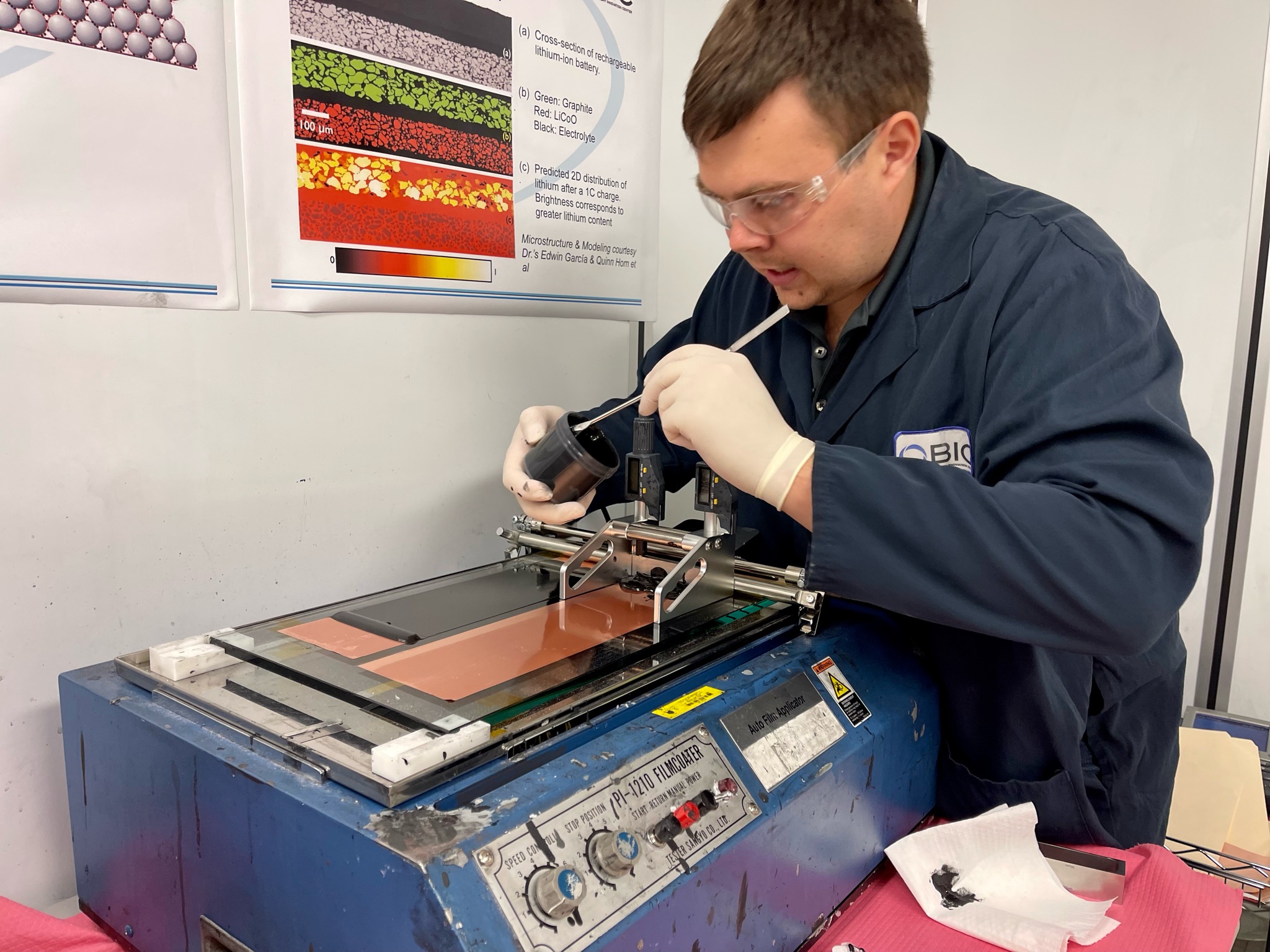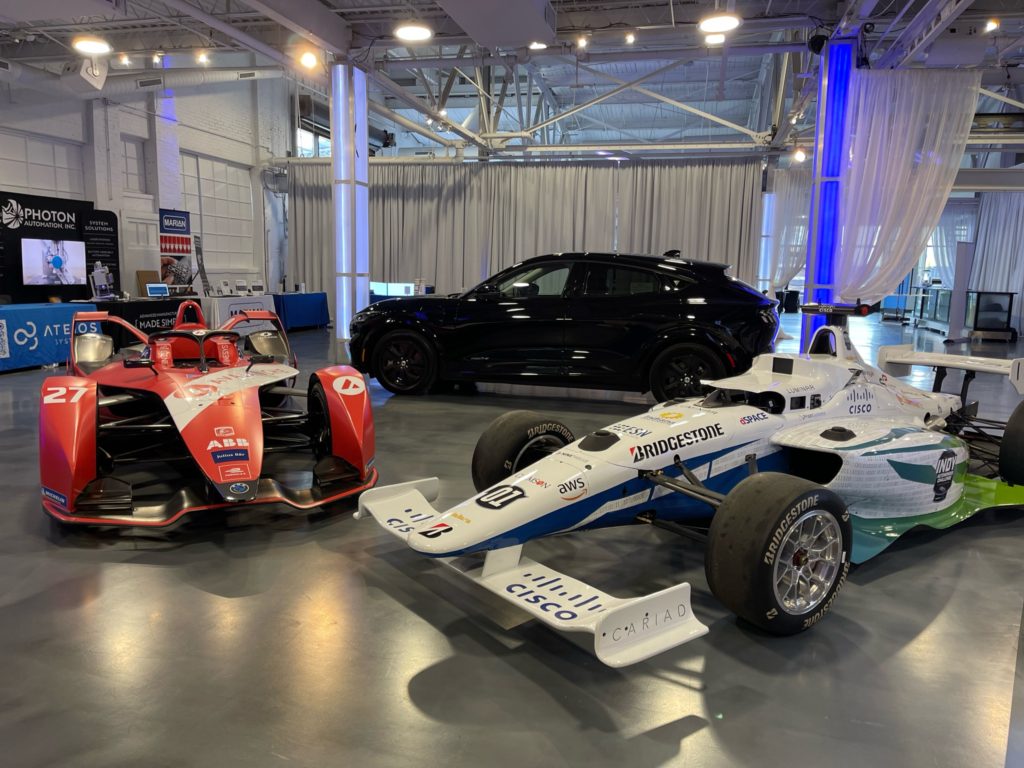Greene County nonprofit marks 10 years, has partnered with more than 500 companies to advance energy storage technology
Carol Johnson, Southern Indiana Business Report
Explaining the work of the Battery Innovation Center can take a lot of time and a lot of words, but Ben Wrightsman can boil it down to this, “BIC is the secret sauce.”
Ten years ago, BIC opened in Greene County to collaborate with the Department of Defense to accelerate innovation in the field of battery technology by providing access to cutting edge technology and a full spectrum of research and development.
Now a decade later, BIC has worked with more than 500 companies involved in various sectors of advanced energy storage.
On Oct. 11, BIC CEO Wrightsman spoke to industry stakeholders at a luncheon at the Crane Bay Event Center in Indianapolis while also marking 10 years since the BIC facility broke ground on the 40,000 square foot facility in Newberry not far from Naval Surface Warfare Center, Crane Division.
BIC began with fewer than 10 employees. Today, the facility employs 30 and has open positions for engineers, battery technicians and in systems support.
In a world that is accelerating toward zero emissions and away from carbon-based fuels, innovation and research centers like BIC serve to advance the efforts of large multinational industry leaders such as Caterpillar and Cummins as well as small startup companies.
“Battery is in our name, but we’re much more than that,” Wrightsman told the audience. “Staying ahead of the innovation curve is what we’re about.”
Batteries are still at the forefront, but Wrightsman said BIC is also working with hydrogen and hybridized equipment that combines hydrogen with batteries.
In the beginning, commercial work and small scale start-ups were a smaller focus of BIC. Today, Fortune 500 companies as well as fledgling firms turn to BIC.
“Getting into the energy industry is resource intensive and capital intensive and there’s heavy competition for the talent sector. At the Battery Innovation Center, a startup can come into a facility that is already set up with the expertise and equipment they need,” Wrightsman said.
By working with the BIC, small companies are on the fast track to begin production versus spending years struggling to find investors to come along with them.
For larger companies that have engineers and capital, BIC gives them a broader comparison on what’s going on in the industry allowing them to accelerate their innovations.
“We can say, ‘Yes, you’re doing it right,’ or ‘Here’s another way to do it.’ We become a third party, unbiased lab so when this company says they can do X, we can verify that they can do X and how it compares to others,” he said.
Charting BIC’s growth
Featured speakers were Drita Roggenbuck, senior vice president and general manager of transportation business for NI, Rod Shurman, senior vice president of Electrification and Advanced Power Solutions division for Caterpillar and Ann Lathrop, executive vice president of global investments for the Indiana Economic Development Corp.
Indiana ranks fourth in new clean energy development because of facilities like BIC and aggressive efforts by the state, Lathrop said.
“How are we doing this? We are going and getting the economy we want and not waiting for the economy to come to us,” she said. “BIC is a perfect example of this. By investing in BIC, we invest in entrepreneurs, innovation and an ecosystem with the resources needed for growth.”
In her global travels for the IEDC, Lathrop said she has grown accustomed to the question, “Which ‘I’ state are you from?”
That, she said, is changing.
“BIC has put Indiana on the map, catapulting Indiana to the forefront of the most in-demand sector of electric vehicles,” she said. “We are well positioned in Indiana to lead the EV industry.”
Automotive manufacturing is the second-largest manufacturing sector in Indiana. Toyota, Honda, Cummins and General Motors have all ramped up their commitment to electric vehicles. In fact, the Columbus-based Cummins is working toward zero emissions by 2050.
Electric vehicle sales are expected to rise dramatically between now and 2030 in the U.S. and the world. By the start of the next decade, EVs are expected to be just over one-third of U.S. new vehicle sales. The LMC Automotive consulting firm expects EVs to be 5.6% of U.S. sales in 2022, rising to 13.5% by 2025 and 36.4% in 2030.
Closing out the luncheon, a panel discussion of battery storage leaders from across the state provided insight into where the industry is going.
The panel featured Alex Moeller, senior director with Andretti Motorsports, which has a race car in the Formula E racing series for all-electric cars; David Ventola, business development director for Durr, Adam Wiesler, engineer at Lilly, Ashley Schaefer, head of cell development at 10 9 Tech, Dr. Rajan Kumar, CEO of Ateios, Melika Jahangiri, senior director of Emobility at Cummins, and Chris Moorman, chief commercial officer at ReElement.





